How to make money with digital art

Level up your open finance game three times a week. Subscribe to the Bankless program below.
Dear Crypto Natives,
Who can tell me what this is?
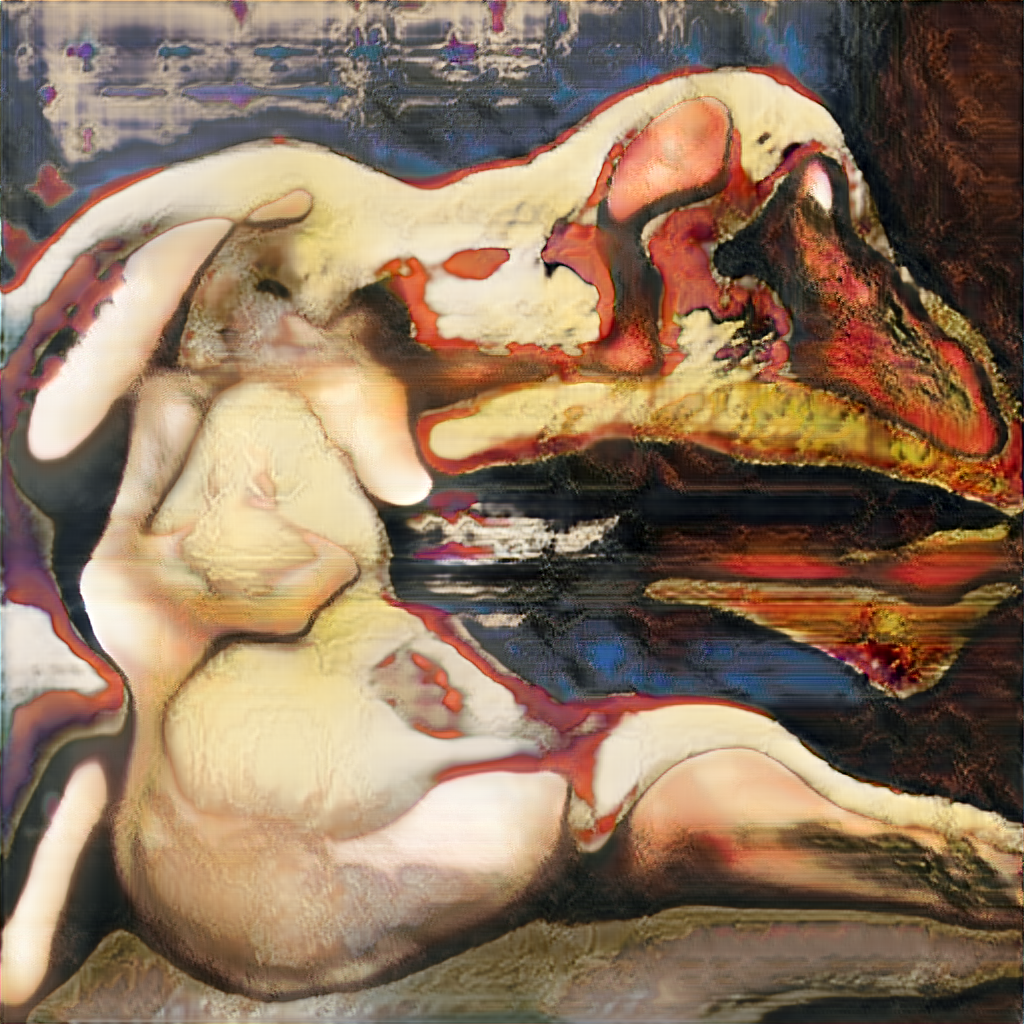
It’s AI Nude Portrait #1—a $12k piece of scarce digital art.
Two years ago it sold for $80.
A year ago $310.
Last month $3,614.
10 days ago $12,909.
Robert Barrat a 19-year old AI artist created it.
A mysterious digital art collector now owns it. Will she flip it for more money? Will she lend it for display to a virtual museum? Will she hold it as speculative store-of-value like the $3 trillion in analog art currently held by the world’s elite?
I have no idea.
I do know this: scarce digital collectibles are just getting started, the potential is massive, and no bank needed. You like getting involved at the ground floor don’t you?
I know you do.
So let’s sip some fine wine & level up. This is how to make money on digital art.
-RSA
TACTICS TUESDAY:
Tactic #21: How to make money with digital art
A crypto native art market has emerged on Ethereum, powered by provably-authentic NFTs. We’re going to learn how to use the SuperRare marketplace to assess artists and individual works, build a collection, and make trades.
- Goal: Learn how to collect & trade crypto art
- Skill: Intermediate
- Effort: 1-3 hours
- ROI: Average resale on SuperRare is +915%
Post by: Jonathan Perkins, co-founder SuperRare
What is crypto art?
As the web3 ecosystem matures, applications outside of traditional finance are gaining new dimensions enabled by Ethereum as the native settlement layer. Since non-fungible tokens (NFTs) are unique, immutable assets that track ownership and price history on-chain, they are a perfect platform to bring about an internet-native art market for the first time.
SuperRare is a collecting platform that authenticates digital artists, and enables them to create and launch authentic single-edition NFT artworks into the marketplace. As with any art, people buy it for many reasons including patronage, appreciation, cool-factor, and to speculate on future value.
How does it work? The NFTs are exchanged in SuperRare’s peer-to-peer marketplace, each token representing the official collectible version of the artwork as intended by the artist. The digital artwork file and metadata are stored in IPFS, the hash of which is written into the token, and the tokens are held and traded directly from users’ Ethereum wallets.
Similar to traditional collecting, the value of artworks can be based on several factors, including scarcity, ownership history, and social dynamics.
Although this space is new and the value of the assets can be more nuanced than financial products, repeating trends and patterns have emerged that new collectors can benefit from.
And the space is heating up– artists and collectors have earned over $400,000 in the SuperRare marketplace to date, and last week a new all-time secondary sale record was set when SuperRare token #1 sold for over $12,000, after being originally purchased for about $80.
Get set up
To get started, make an account on SuperRare using MetaMask or another web3 wallet, and fill out your profile. Collecting is inherently social– we think of SuperRare kind of like Instagram meets Robinhood– so you can make your profile as cool and personalized or as pseudonymous as you see fit.
How much does a digital artist make?
The activity and marketplace pages are a good place to start—you can tell what works are selling for how much, and who is most active this week on the 7-day leaderboards
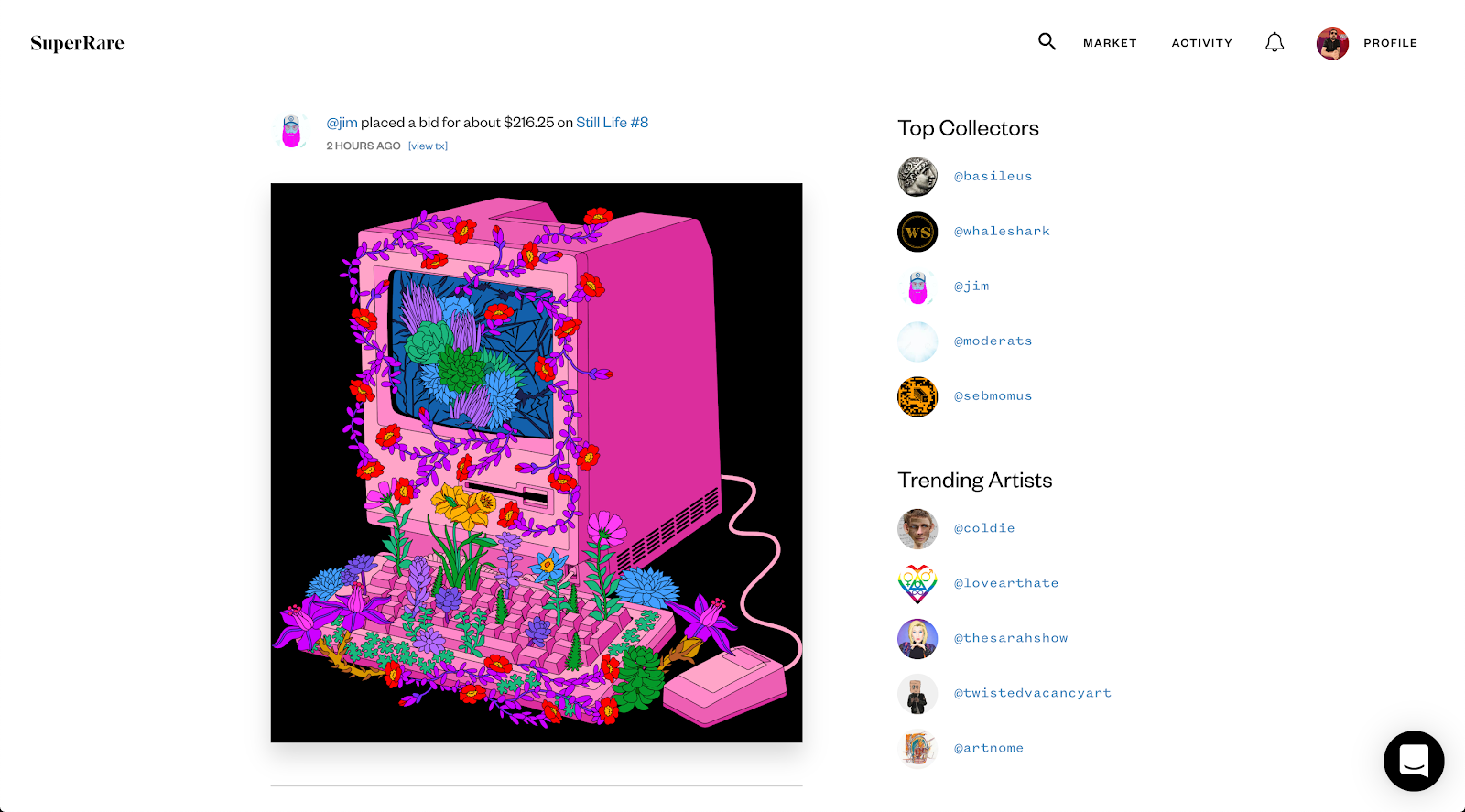
Check out some artist and collector profiles– many link to a Twitter or Instagram account, where you can learn more about them, and what they’re saying about crypto art on their social accounts. If you click into an artwork detail page, you can favorite the piece by clicking the ❤️icon, and find it later in your favorites.
Look at the overall artist stats
Once you’re a bit more familiar with the market, it’s time to look over the all-time artists’ stats page to get a sense for artists’ token supplies, average sale price, and total number sold. The market has shown that artists that pay attention to scarcity and don’t flood the market maintain a higher average price, and their works generally maintain good value over time.
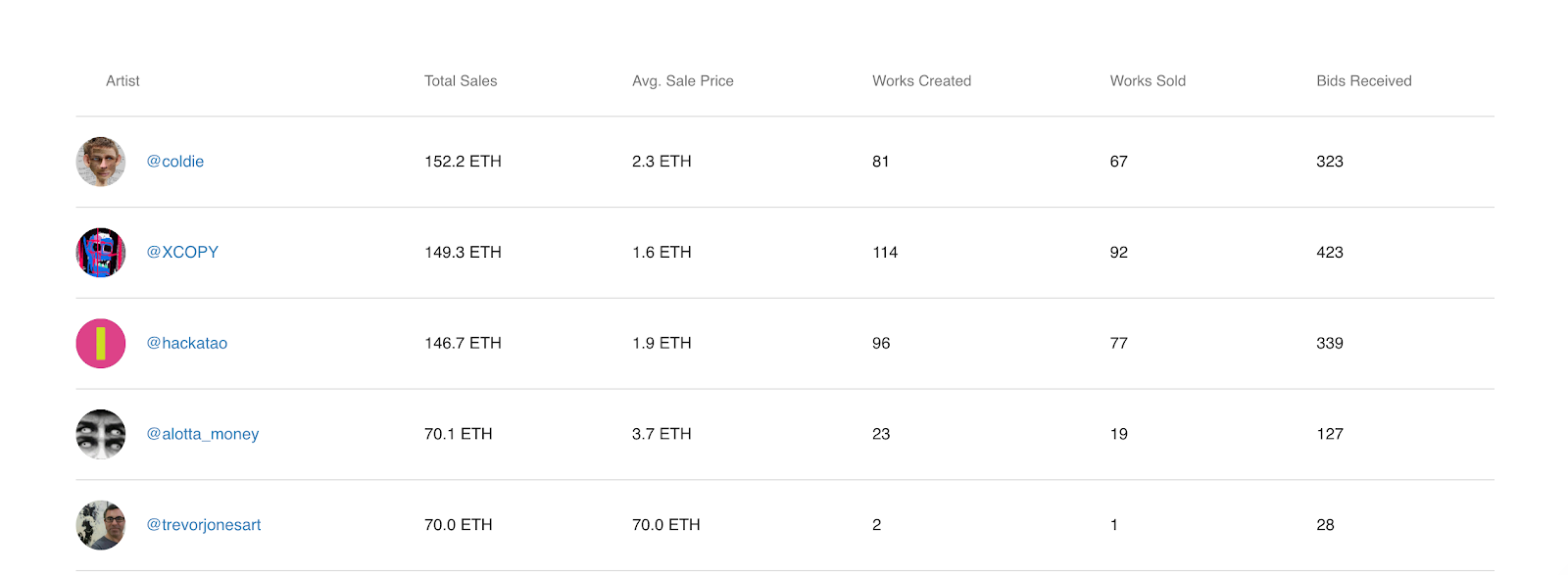
Pick a few individual artists and dig into their collection
After getting a high-level view of the artists’ stats, click into the profile and collection pages of 3-4 individual artists to learn more about their style, their price history, and how many pieces they own out of their total supply. For example, here is the collection page of artist Reinhard Schmid, who at time of writing owned three works out of 25 created.
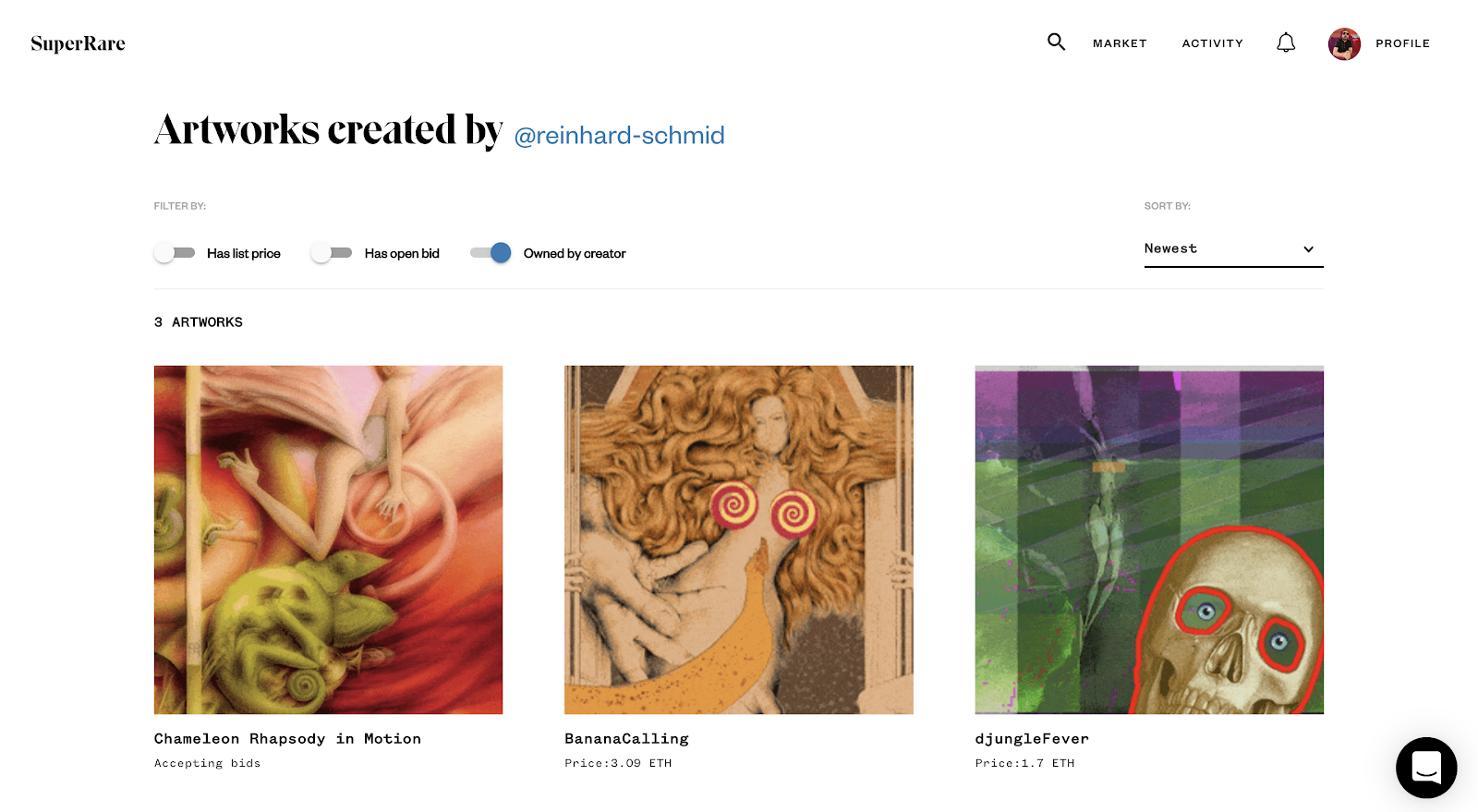
As you see, two artworks have a “buy it now” price, and one is currently accepting bids. You can always refer back to the overall stats page to see someone’s average price, or click into works they’ve sold in the past to see more specific data points.
Make your first purchase
When making a purchase, I’d recommend taking these data points into account:
- Overall scarcity / supply of the artist
- Average sale price of the artist
- Social / web presence of the artist
- Does the art speak to you
Once you’ve found 1-3 pieces that interest you and that you think will appreciate over time due to the above metrics and assessment, you can either place a bid in ETH, or, if the work has a “buy it now” price, you can simply purchase it with ETH.
Wonder how much a digital artist makes? You’ll find out when you buy your first piece of digital art.
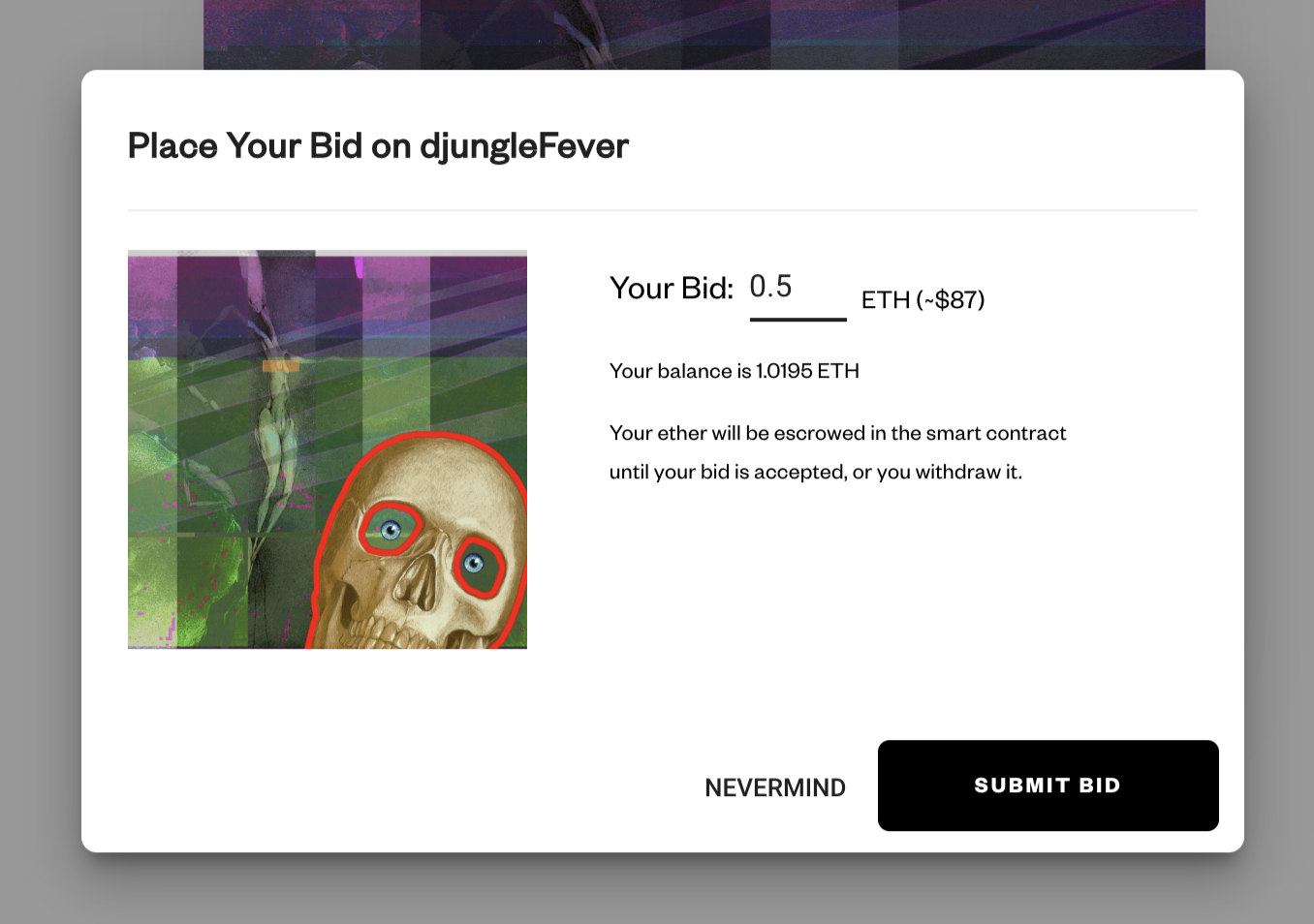
Showcase your collection & connect with the community
Now that you’ve started building your collection, you’ll have your own collection page that you can view and share online. Many collectors additionally showcase their collections in Ethereum’s emerging VR metaverses—Cryptovoxels and Decentraland. I also recommend connecting with artists and collectors on Twitter, and joining the Community Discord.
Sell digital art: Set sale prices & manage incoming bids
When you want to sell a piece, you can set a sale price on it, which will show up in the marketplace. It’s important to also announce to your social channels and in the SuperRare Discord that you’re looking to sell or make a trade with another collector.
Whenever you receive a bid or make a sale, you’ll get an in-app notification on SuperRare as well as an email. As you make trades over time, your collector stats will reflect your purchase and sale history, and you can monitor stats like your average resale price in ETH.
Conclusion
Tokenized art presents a brand new way to collect and trade authentic art on the internet, for fun and for profit. While it is admittedly a nascent space, there is a rich ecosystem forming around crypto art– a sub-rabbit hole of the broader crypto field. The direct market access provided by Ethereum combined with the social layer of the web makes for an internet-native art market that in some ways mirrors the traditional art world, but that is natively built for the digital generation. And while the traditional art world sleeps on this space, it’s a great time for you to still get in early.
Action steps
- Collect your first piece of crypto art using MetaMask & SuperRare
- Showcase your collection in the emerging crypto/VR metaverse
- List items for sale & track your collector metrics
Author Blub
Jonathan Perkins is a developer and co-founder of SuperRare, the premier crypto art collecting platform on Ethereum. His goal is to bring web3 to the mainstream through delightful, world-class UX, and is currently looking for a passionate designer and full-stack engineer to join the mission.
Subscribe to Bankless. $12 per mo. Includes Archive access, Inner Circle & Deal Sheet.
Filling out the skill cube
You just leveled up on scarce digital art—now go get the opportunities! As the world moves digital, these markets may one day rival physical art markets. Front-run it.

👉Send a tip for today’s issue (rsa.eth)
Not financial or tax advice. This newsletter is strictly educational and is not investment advice or a solicitation to buy or sell any assets or to make any financial decisions. This newsletter is not tax advice. Talk to your accountant. Do your own research.
Disclosure. From time-to-time I may add links in this newsletter to products I use. I may receive commission if you make a purchase through one of these links. I’ll always disclose when this is the case.